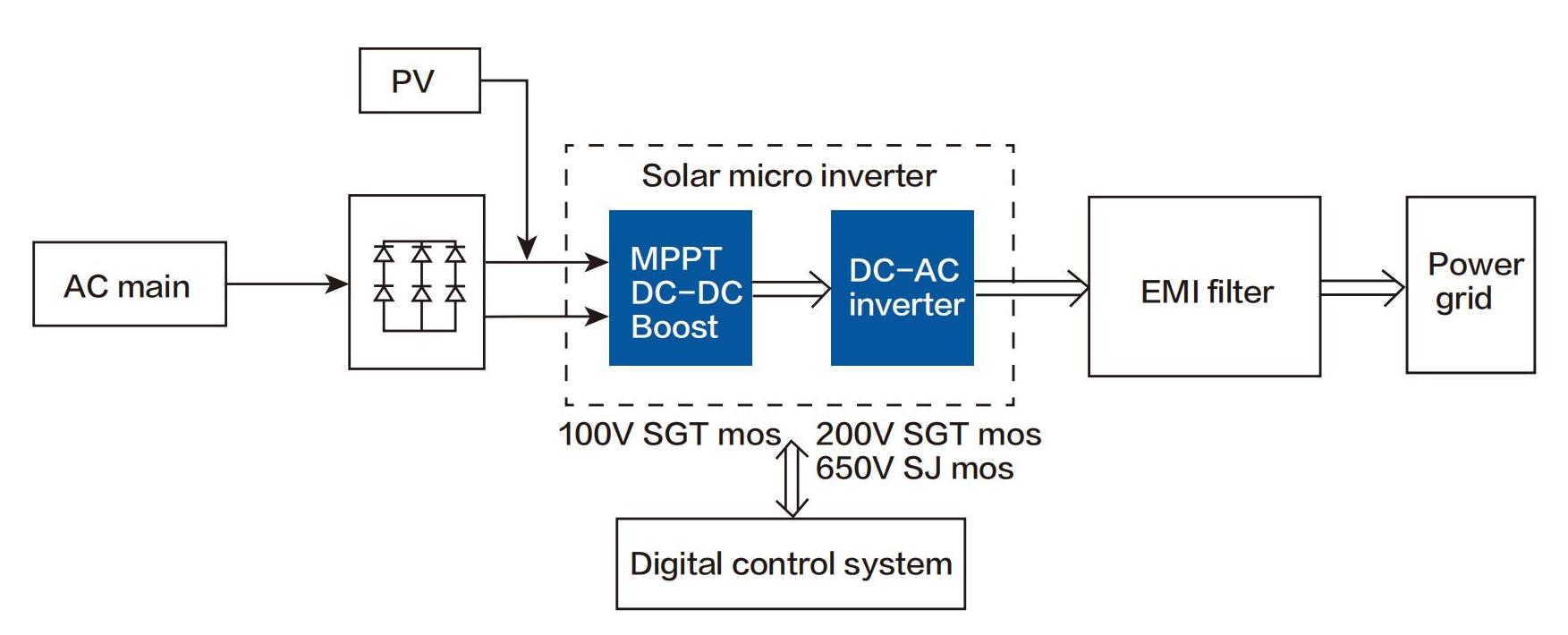储能系统
储能是解决可再生能源高比例应用的手段。电池储能系统由于其高能量密度和灵活、方便的特点而得到快速发展。储能功率转换系统是电池介质与电网的接口,承担着对电池介质的管理、充放电控制与并网任务。随着储能系统容量的扩大和对其功能需求的提升,储能功率转换系统也发生了一系列变革与创新产品特色:
1. 超小的栅极电荷;
2. 工作高效;
3. 针对应用优化的导通电阻;
4. 提高使用寿命。


电路图

储能是解决可再生能源高比例应用的手段。电池储能系统由于其高能量密度和灵活、方便的特点而得到快速发展。储能功率转换系统是电池介质与电网的接口,承担着对电池介质的管理、充放电控制与并网任务。随着储能系统容量的扩大和对其功能需求的提升,储能功率转换系统也发生了一系列变革与创新产品特色:
1. 超小的栅极电荷;
2. 工作高效;
3. 针对应用优化的导通电阻;
4. 提高使用寿命。

GOFORD’s semiconductor solutions offer cutting-edge technologies that meet or
exceed power handling and design specifications for energy storage systems. When
designing energy storage systems, several factors should be taken into account:
Power handling - ESS solutions must meet or exceed the specific application’s
power handling and design requirements, such as capacity, voltage range, current
ratings, and efficiency.
Reliability and durability - the reliability and durability of the ESS are non-negotiable
— the ESS should be able to withstand various environmental conditions and temperature
fluctuations, and operate reliably over an extended period.
Scalability - the ESS design should allow for easy expansion or integration with other systems
as power demands grow or change.
Safety and compliance - compliance with safety standards and regulations is essential to ensure
the proper operation and safe usage. Considerations include protection against overcharging,
short circuits, and thermal runaway, plus applicable AEC-Q101 qualification and PPAP capability
for electric vehicles.
Energy efficiency and performance - ESS should offer high energy conversion efficiency to
maximize the utilization of stored energy. For EV applications, performance metrics such as
round-trip efficiency and response time should be considered when selecting an energy storage
solution.

